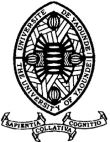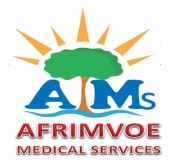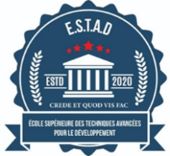Acute Renal Damage Associated with Severe Plasmodium Falciparum Malaria in Children in Bamako (Mali)
L’atteinte Rénale Aigue Liée au Paludisme Grave À Plasmodium Falciparum Chez l’Enfant à Bamako (Mali))
DOI:
https://doi.org/10.5281/hra.v3i4.6574Keywords:
Severe malaria, acute kidney injury, child, hemodialysis, MaliAbstract
RÉSUMÉ
Introduction. Le paludisme, cause majeure de décès chez les enfants de moins de 5 ans, peut entraîner une atteinte rénale aiguë (ARA), moins fréquente chez l’enfant mais potentiellement grave en raison des désordres hydroélectrolytiques qu’elle provoque, tels que l’œdème aigu du poumon ou l’hyperkaliémie. Objectif. Décrire les complications rénales de cette pathologie infectieuse et les indications de l’épuration extra-rénale. Méthodologie. L’étude était transversale à visé descriptive et observationnelle, et réalisée dans l’unité de dialyse du centre de santé de référence de la commune V du district de Bamako durant 10 mois. Résultats. L’étude a inclus cinq enfants atteints d’insuffisance rénale aiguë (IRA), dont 40 % de filles et 60 % de garçons, avec un âge moyen de 10,4 ans. Aucun antécédent rénal familial ou personnel n’était rapporté chez 80 % des patients. Une consultation néphrologique a été sollicitée pour 80 % en raison d’une altération de la fonction rénale et pour 20 % en cas d’anasarque. La créatininémie moyenne était de 1025 µmol/l, l’urée moyenne de 41,47 mmol/l, et le débit de filtration glomérulaire (DFG) moyen de 4,76 ml/min. La principale complication était le coma urémique. Une hémodialyse immédiate a été indiquée chez 60 % des patients en raison d’une azotémie toxique (> 35 mmol/l), avec une moyenne de 2 séances de dialyse. La fonction rénale a été récupérée chez 40 % des patients, tandis que 20 % ont présenté une atteinte rénale persistante et 20 % sont décédés. Conclusion. L’atteinte rénale aigue était la nécrose tubulaire aigue (NTA) sur le plan clinicobiologiques. Le coma urémique était l’indication principale d’une prise en charge en dialyse.
ABSTRACT
Introduction. Malaria, a leading cause of death in children under 5 years old, can lead to acute kidney injury (AKI), which is less common in children but potentially severe due to the hydroelectrolytic imbalances it causes, such as acute pulmonary edema or hyperkalemia. Objective. To describe the renal complications of this infectious pathology and the indications for extra-renal purification. Methodology. The study was cross-sectional, descriptive and observational, carried out in the dialysis unit of the reference health centre in Commune V of the Bamako district over a 10-month period. Results. The study involved five children with acute renal failure, two (02) of whom were female (40%) and three (03) male (60%). The mean age was 10.4 ± 3.78 years, with extremes of [7-15] years and 60% in the [6-10] age group. No family or personal history of kidney disease was found in 80% of patients. Nephrological advice was sought in 80% of patients for impaired renal function and in 20% for hydrops. Mean hypercreatinin was 1025 µmol/l ± 625 µmol/l with extremes [505 - 1748] µmol/l. Mean urea was 41.47 mmol/l ± 11.12 mmol/l, with a range of [30 - 57.49] mmol/l. Mean glomerular filtration rate (GFR) was 4.76 ml/min ± 4.1 with extremes [1.01 - 10.08] ml/min. The main complication associated with ARBs was uraemic coma. The indication for immediate haemodialysis was the toxicity of azotemia greater than 35 mmol/l, in 60% of patients. The average number of dialysis sessions was 2, with daily dialysis in 60% of patients. Renal function was recovered in 40% of patients. Persistent renal damage was observed in 20% of patients, with a death rate of 20%. Conclusion. Acute renal injury was clinically and biologically acute tubular necrosis (ATN). Uremic coma was the main indication for dialysis treatment.
References
1. M. Moussa Tondi, H.D Moussa, M.D Garba, I. Abdou, N. Salamatou, I. Soumeila, A. Seydou Touré. Insuffisance rénale aigue au cours du paludisme grave de l’enfant : Expérience des services des hôpitaux de la ville de Niamey (Niger). Nephrol Ther 13 (2017) 344 – 388
2. M. A. Macher. Insuffisance rénale aigue chez l’enfant. EMC-Pédiatrie 1 (2004) 73 – 88
3. S.A. Kissou, R. Cessouma, M. Barro, H. Traoré, B. Nacro. Insuffisance rénale aigue et paludisme à Plasmodium falciparum : à propos d’un cas. Archives de Pédiatrie 2012 ; 19 : 34 – 37
4. WHO. World Malaria Report 2011. World Health Organization
5. Bonny O, Arbaoui I, Fougue D, Hamroun, Jadoul M, Stengel B, Babinet F, Binet I, Faure P, Frimat L, Lazareth H, Poulin Y, Schiltz D, Stinat A, Vandevivre C, Querin S. Traduction et adaptation française de la nomenclature pour la fonction et les maladies rénales issue de la conférence de consensus KDIGO. Nephrol Ther 2024 ;20(4) :285-300
6. B. Moulin, M.N. Peraldi. Néphrologie ECN – 8ème Edition 2018, p.223
7. Schwartz GJ, Munoz A, Schneider MF, et al. New Equations to Estimate GFR in children with CKD. Journal of American Society of Nephrology: JASN. 2009 ;20(3) :629-637
8. Younoussa Keita, Mouhamadou Moustapha Cissé, Assane Sylla, Fatou Ly, Djibril Boiro, Aliou Abdoulaye Ndongo, Binoutiri Lindsey Egounlety, Amadou Sow, El Hadji Fary Ka, Ousmane Ndiaye, Boucar Diouf, Mouhamadou Guélaye Sall. J. Afr Pediatr. Genet Med 2017; 3 : 38 – 43
9. Keita. M, Coulibaly S, Samaké D, Cissoko. Y, Keita BS, Traoré H, Togo. B, Dao S. Paludisme grave chez l’enfant dans le district de Bamako : Aspect clinicobiologiques et thérapeutiques. Health Sci.Dis : Vol 23 (4) 2022 : 30 – 33
10. 10. Thomas Senua Kunuanunua, Célestin Ndosimao Nsibu, Jean-Lambert Gini-Ehungu, Joseph Mabila Bodi, Pépé Mfutu Ekulu, Hypolite Situakibanza, Nazaire Mangani Nseka. Insuffisance rénale aigue dans les formes graves du paludisme chez les enfants vivants à Kinshasa. Nephrol Ther 9 (2013) 160-165
11. Kama Tounkara. Prévalence de l’insuffisance rénale due au paludisme grave chez l’enfant dans le département de pédiatrie du CHU Gabriel Touré de Bamako. Thèse Med FMOS. 2020. Université des sciences, des techniques et des technologies de Bamako.
12. Samaké M, Touré SM, Sy S, Fofana AS, Coulibaly SB, Soumbounou G, Yattara H, Coulibaly M, Kamissoko F, Milimono P, Dembélé S, Fongoro S. Insuffisance rénale aigue au cours du paludisme grave de l’enfant dans l’unité de néphrologie de l’hôpital fousseyni Daou de Kayes, Mali. Rev Mali Infect Microbiol 2023, vol 18 N°2
13. Essola L, Mowangue PS, Minko J, Ngomas JF, Soami V, Sima Zué A. Prise en charge de l’insuffisance rénale aigue dans le paludisme grave de l’enfant au centre hospitalier universitaire de Libreville. Une Etude de 12 cas. Health Sci Dis : 2019 ;20(4) :57-61
14. Pakasa NM, Sumaili EK. Particularités anatomopathologiques de la maladie rénale su sujet de l’Afrique Sub-Saharienne : Revue synthétique des données de la République Démocratique du Congo. Ann Pathol 2012 ; 32 (32) :40-52
15. Kane Y, Keita AL, Lemrabott AT, Tondi ZNM, Faye M, al. Acute rénal Failure in severe Malaria in West Africa : A retrospective study conducted between 2011 and 2014 at Aristide Le Dantec Hospital in Dakar, Sénégal. J Kidneys 2017 ; 3(1) :136
16. Sowunmi A, Okubeyejo TM, Gbotosho GO, et Happ CT. Facteurs de risque d’hyperparasitémie à Plasmodium falciparum chez les enfants atteints de paludisme. BMC infectious Diseases 2011, 11 : 268
17. Olowu WA, Niang A, Osafo C, Ashutantang G, Arogundade Fa, Porter T et al. Outcomes of kidney injury in children and adults in Sub-Saharan Africa : a systematic review. Lancet Glob Health 2016 ; 4(4) :242-250
Downloads
Published
How to Cite
Issue
Section
License
Copyright (c) 2025 Coulibaly N, Yattara H, Traoré Y, Kodio A, Kanté M, Konaré S, Maiga D, Sidibé S, Fofana AS

This work is licensed under a Creative Commons Attribution-NonCommercial-NoDerivatives 4.0 International License.
Authors who publish with this journal agree to the following terms:
- Authors retain copyright and grant the journal right of first publication with the work simultaneously licensed under a Creative Commons Attribution License CC BY-NC-ND 4.0 that allows others to share the work with an acknowledgement of the work's authorship and initial publication in this journal.
- Authors are able to enter into separate, additional contractual arrangements for the non-exclusive distribution of the journal's published version of the work (e.g., post it to an institutional repository or publish it in a book), with an acknowledgement of its initial publication in this journal.
- Authors are permitted and encouraged to post their work online (e.g., in institutional repositories or on their website) prior to and during the submission process, as it can lead to productive exchanges, as well as earlier and greater citation of published work










